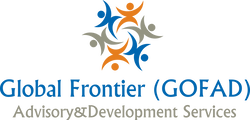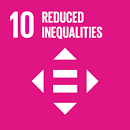|
In September 2015, 192 countries signed on to the 2030 Sustainable Development Goals (SDGs) with 17 Goals and 169 targets. The UN General Assembly 2019 endorsed the Political Declaration adopted by the Sustainable Development Goals Summit, held at its Headquarters in September. The Summit committed Member States to taking a myriad of actions to implement the 2030 Agenda, ranging from mobilizing adequate and well‑directed financing to investing in data and statistics for the Sustainable Development Goals. This spread of actions was fully ventilated at the UN Economic and Social Council (ECOSOC) High-Level Political Forum (HLPF) in July 2019 under the theme "Empowering People and Ensuring Inclusiveness and Equality". Not only did It demonstrate the central role of SDG #10 “reduce inequality within and among countries" but also the pervasive 'inclusiveness and equality' across the 17 SDGs. See: https://sdg.iisd.org › news › global-goals-website-creates-target-level-icons
This week we outline the global principles and some applications of the SDGs. It is our intention to follow up in future blogs with examining the challenges and prospects for developing countries and regions, achieving inclusiveness and equality. The background document prepared for the ECOSOC HLPF illustrated that (10) targets within SDG #10 cast a wide net to capture multiple drivers of inequality and to ensure that no group or individual is left behind. Four targets address inequality within countries across social, economic and political dimensions that aim to expand prosperity, inclusion, and social protection. Three targets aim to reduce inequality among countries with attention to cross-border flows of finance and people. Three other targets focus on the means of implementation and put forward concrete steps for attaining greater equality by directing resource flows toward those most in need. High-level Political Forum on Sustainable Development (HLPF) 2019 Convened by ECOSOC In addition, 60 targets across the SDGs – not including those in SDG #10 – are directly linked to reducing inequality. Equal or universal access for all to resources, services and opportunities is a recurring theme across the SDGs. For example, SDG #2 that aims at eliminating hunger calls for access to food, land and productive resources; SDG #3 on good health and well-being calls for universal access to reproductive health-care services and universal healthcare; and SDG #4 calls for equal access to quality pre-primary through tertiary education and other learning programmes. SDG #8 on decent work and economic growth directly addresses inequality by calling for stronger growth rates in least developed countries, increasing micro, small and medium enterprises, promoting migrant workers’ rights or calling for more government spending in social protection. The list also includes access to energy, infrastructure and transport. Above all achieving equality-oriented targets in other SDG Goals promises to directly affect progress toward the targets in SDG #10. Since the adoption of the 2030 Agenda in 2015, the UN reports positive movement as measured by SDG #10 targets. In 64 per cent of the countries with data, the incomes of the poorest 40 per cent of the population grew faster than the national average. The global average cost of sending remittances has declined in recent years although rates are still more than double SDG targets. And tariffs faced by small island developing States and least developed countries have been falling. This progress has been mixed across countries and regions. Some groups including those in rural areas (e.g. family farmers), women, young people, people with disabilities, indigenous peoples and others have persistently clustered at the bottom of distributions. Real wage growth has constantly declined since 2015 and at the same time, a warming climate, demographic change, decent work deficits, political crises, technological change and conflict risk exacerbating inequalities. In these circumstances actions are toward equality in both opportunities and outcomes are necessary. Inequalities can become self-perpetuating across generations, thus hindering progress towards one of the central objectives of the 2030 Agenda – that of ‘leaving no one behind’. There is another important gap in between establishing indicators and informing inclusive policies. It revolves around tracking progress on discriminatory practices and income deprivations at the global, regional and national levels is limited. A set of issues from the UN SDG Summit that can exacerbate such tendencies include rapidly changing technologies; climate related shocks, disasters and crises; the globalization of information, business, and social networks; the decreasing bargaining power of workers; conflicts and many other trends. "But they can also open up space for new alignments and forward-looking cooperation within and among countries. At the same time, not all groups will be equally affected by these trends, with those who are already marginalized having limited resources to withstand shocks and to capitalize on emerging opportunities, which could further deepen inequalities". SDG Summit These are global trends. They indicate some of the major indicators that should engage the attention of countries nationally, sub-regionally and regionally. Listed here are some of the recurring suggestions from several sources some of which will be further explored in future blogs: Human Capital Development
Growth and Development
Planning and Financing Development
Public Policy and Partnerships
Conclusion Contending ideas among of policy makers , experts and practitioners sharing experiences around the world, and at the more recent symposia at the UN, the IMF and the World Bank, indicate that multilateralism and international cooperation are essential to overcoming the challenges facing SDG implementation. Strengthened fiscal capacity, improved tax systems, reoriented expenditure on projects with bigger development impact and combined tax incentives with bigger returns to countries, are all priorities. The clincher for me that aptly describes the challenges to inclusiveness and equality is represented in a statement by Amanda Khozi Mukwashi, CEO, Christian AID. At the CSO session "SDGs: Making it Happen" at the IMF -World Bank Annual meetings (2019) she said: “Many mothers need to make decisions on whether to spend the money they have on a sick child who is about to die or on the food for children that are starving and hungry”. Eddie Greene
2 Comments
12/10/2019 03:38:32 am
Though some of the terms were too technical for me, I am glad to know that a lot of countries have expressed their desire for 2030 Sustainable Development Goals (SDGs). Now, we can see that nations are starting to unite for one goal, which is indeed a good thing. Hopefully, they had a pretty great discussion about matters of their concerns so that they will know the issues to be solved immediately. If we are set to be successful, then we should indeed do it together!
Reply
2/29/2024 01:58:37 am
Narration for the nature and all such projects are firm for the citizens. The host of the field and by all issues. Parameter is implied for the top of the terms for the due course and all approached items for the writers of the content by all margins.
Reply
Leave a Reply. |
Details
AuthorEdward and Auriol Greene Directors, GOFAD. Archives
April 2022
Categories |
Global Frontier Site Links |
Contact InformationEmail: [email protected]
Twitter: @GofadGlobal |


 RSS Feed
RSS Feed
